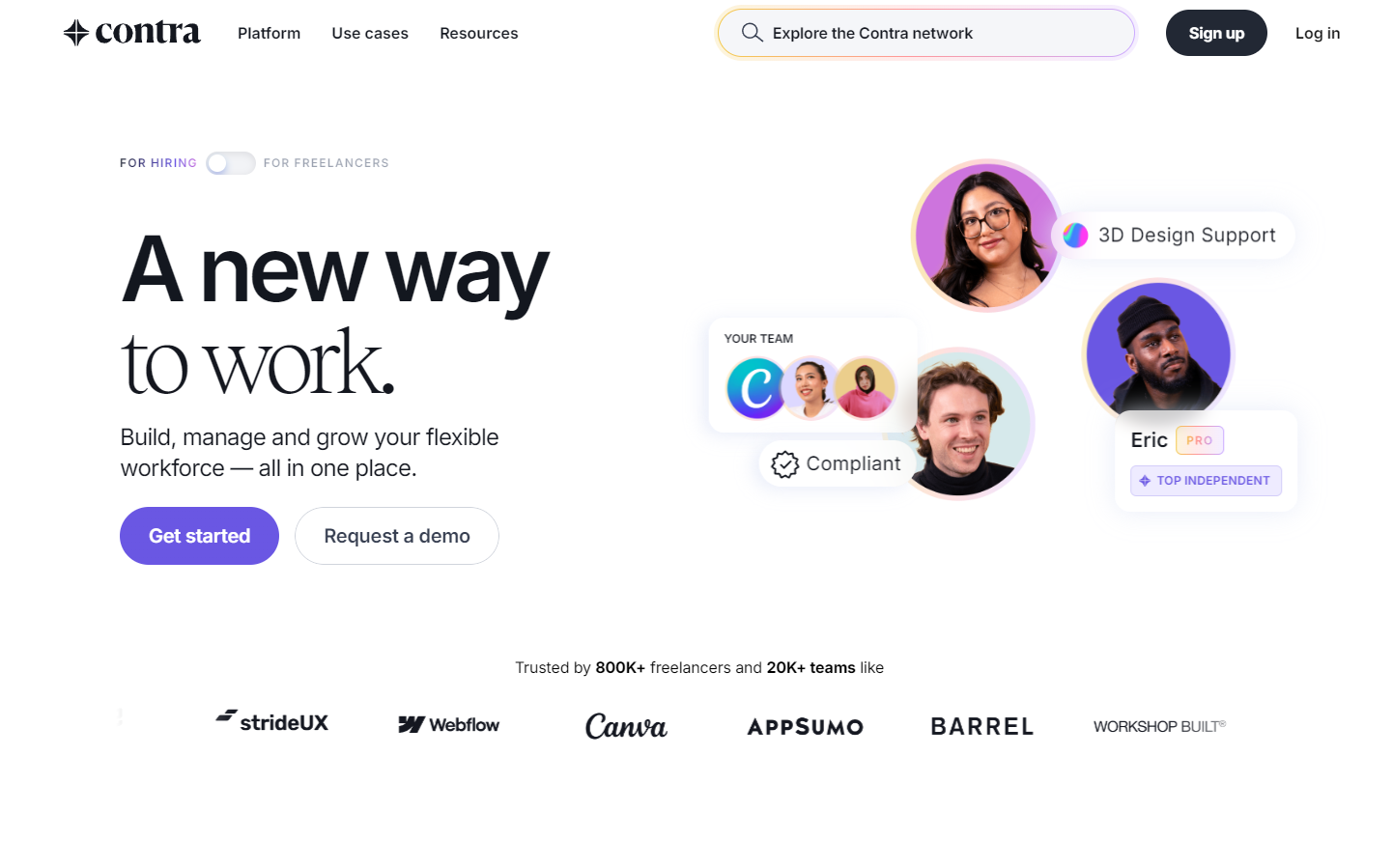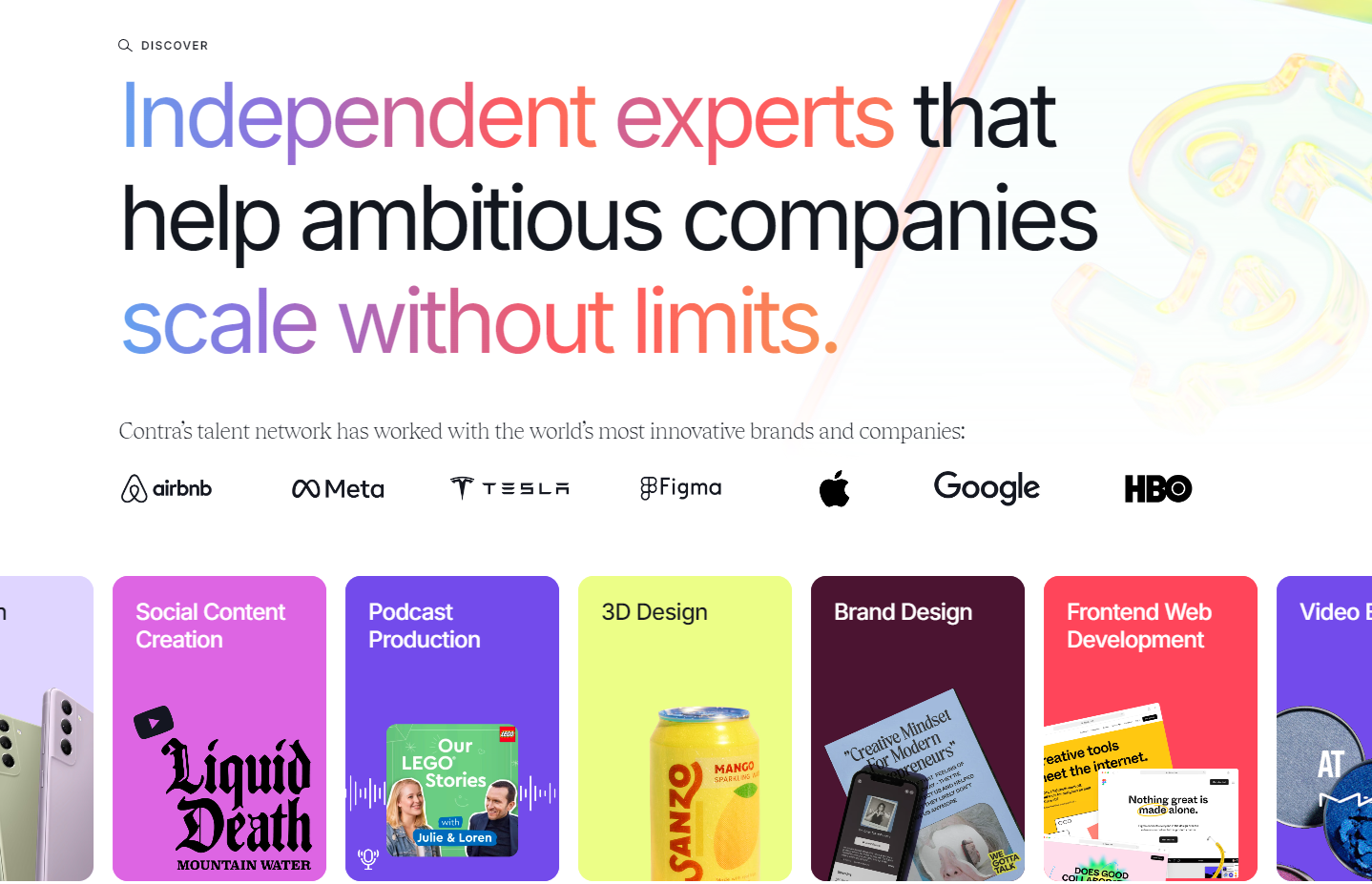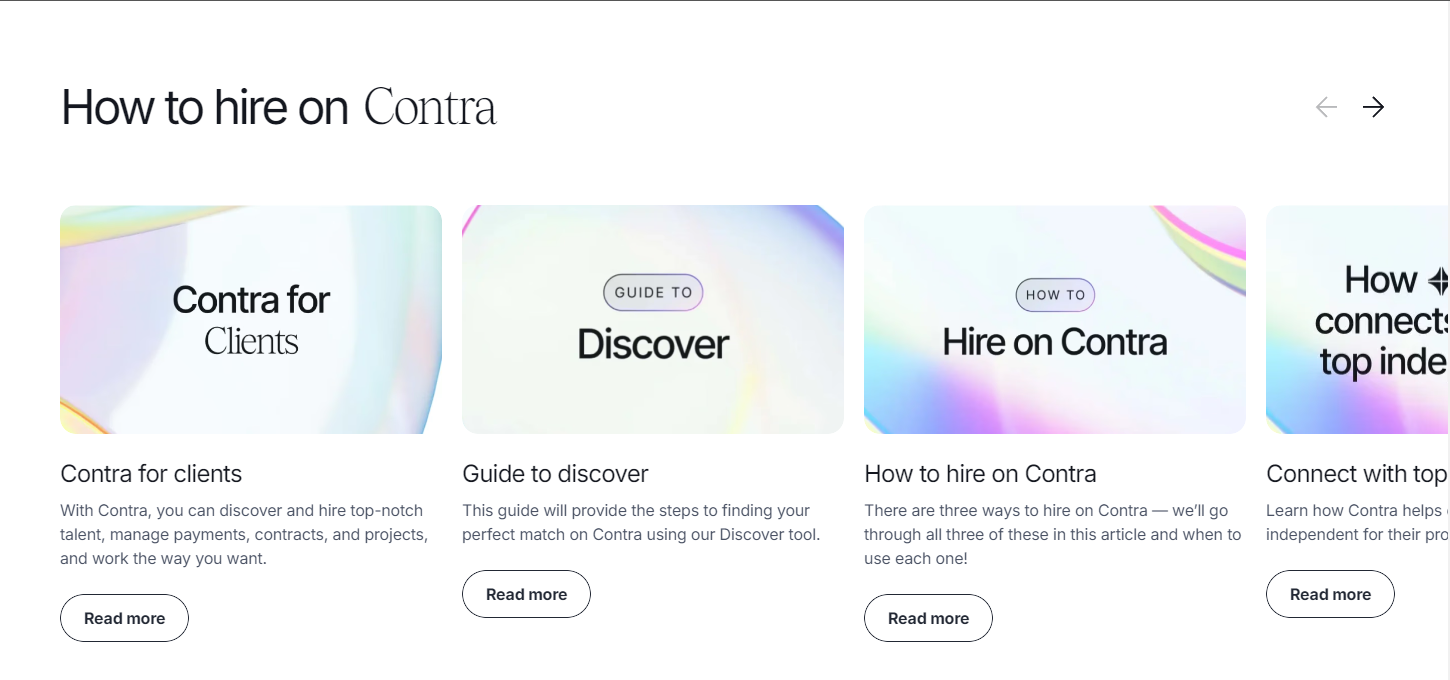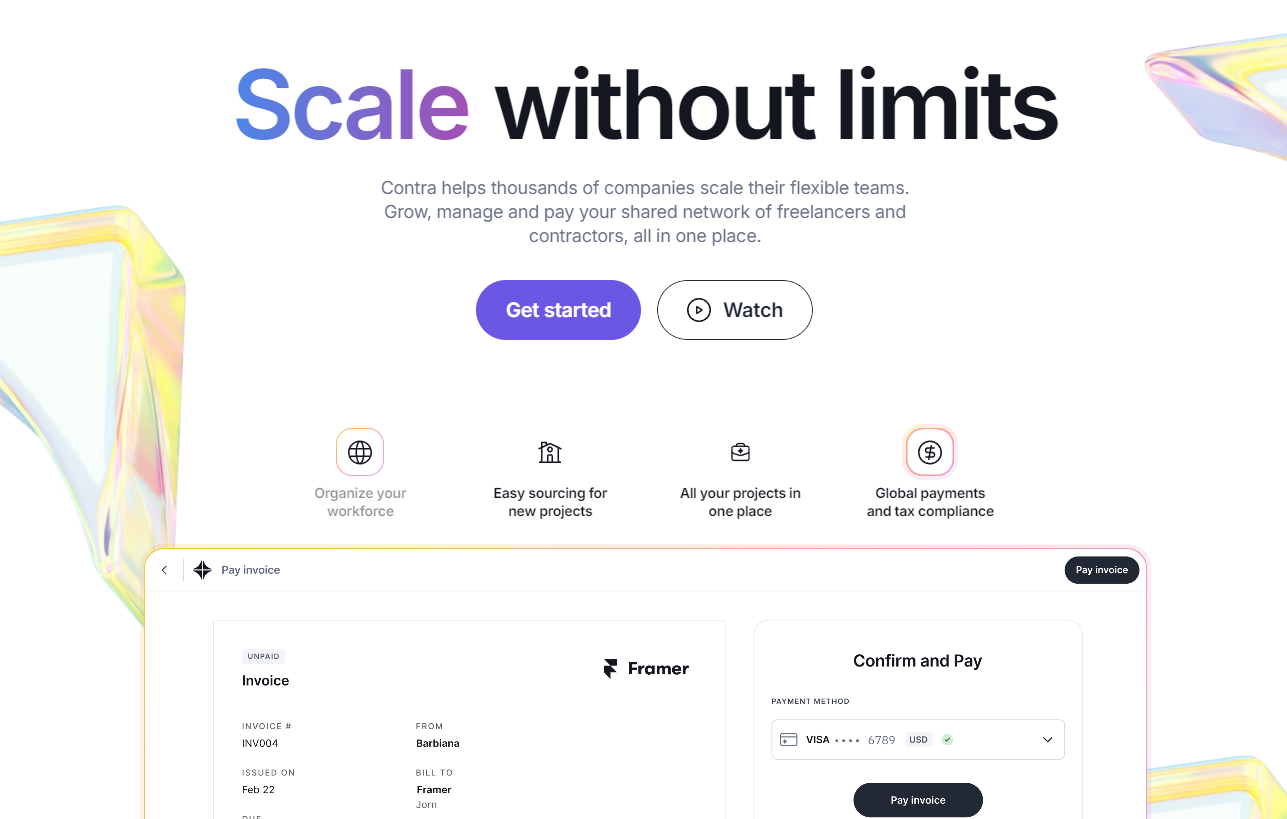Contra
Creating a website like Contra required a combination of strategic planning, cutting-edge design, and advanced development techniques. Here's how the studio might have approached this project:

Discovery and Strategy
- Client Consultation: The first step involved detailed discussions with the Contra team to understand their vision, core values, and goals for the platform. Contra aims to connect freelancers and clients in a seamless, user-driven environment, which meant the website needed to prioritize functionality, simplicity, and scalability.
- Target Audience and Market Research: We analyzed user needs, market trends, and competitors to identify features that would set Contra apart. The focus was on creating a unique, modern platform with a community-driven feel, reflecting Contra’s core mission of empowering freelancers to work on their terms.
- Defining Key Features: The project scope included user profiles, project management tools, seamless communication features, and a payment system, all of which needed to be intuitive and user-friendly.

User Experience (UX) and Design
- Wireframes and Information Architecture: We started by mapping out the user journey with wireframes to ensure the website’s navigation was clear and intuitive. Given the multi-user functionality (freelancers and clients), the website required a dual interface that catered to both parties efficiently.
- Prototyping and Design: The design process emphasized creating a visually appealing yet minimalist interface that highlights community interaction and project collaboration. The brand’s colors, fonts, and overall aesthetics were chosen to be modern and energetic, aligning with Contra’s youthful and innovative spirit.
- Client Feedback and Revisions: Once the initial design concepts were presented, we worked iteratively with the Contra team to refine the look and feel, ensuring it perfectly reflected their brand identity. Key considerations included easy navigation, visibility of key actions (such as finding work or posting projects), and a welcoming, community-focused atmosphere.

Development and Technology Integration
- Frontend Development: The frontend was built using responsive design principles to ensure the website functioned seamlessly across all devices, especially mobile, where many users would interact with the platform. Advanced JavaScript frameworks like React or Vue.js were used to create a smooth, dynamic user experience with real-time updates, such as notifications and messaging.
- Backend Development: A robust backend was developed to support the platform’s core features—user authentication, project management, job postings, messaging, and payments. The challenge here was to build a scalable architecture that could handle a growing number of users while maintaining performance. We employed a combination of Node.js and cloud-based infrastructure to ensure the platform could scale efficiently.
- Database Design: Given the need for user profiles, project histories, and communication logs, a well-structured database was essential. We designed a secure and efficient system to store and manage user data, project details, and transactions while ensuring privacy and compliance with data protection regulations.
- Cross-Platform Testing: Any issues identified during testing were addressed promptly, and additional optimization was performed to improve site speed and performance. This included image compression, code minification, and leveraging browser caching.

Launch and Post-Launch Support
- Staged Rollout: Before the full public launch, we executed a soft launch, gradually rolling out the platform to early adopters. This allowed us to monitor performance in real-world conditions, address any final issues, and ensure a smooth user experience.
- Full Launch and Marketing Support: Once the platform was stable, we launched publicly with marketing support, including SEO optimization, social media integration, and a focus on community-building features to attract and retain users.
- Full Launch and Marketing Support: After launch, we provided ongoing support to the Contra team, addressing any technical issues, updating features, and scaling the platform as the user base grew. Continuous improvements were made based on user feedback, ensuring the platform remained relevant and user-centric.

Challenges and Solutions
- Creating a Seamless User Experience for Two Audiences: One of the key challenges was ensuring a balanced and intuitive experience for both freelancers and clients. To solve this, we carefully crafted separate but cohesive interfaces for both user types, making sure essential actions like posting projects, messaging, and payments were simple and accessible.
- Ensuring Platform Scalability: As Contra’s user base grew, scalability was a critical concern. To meet this challenge, we implemented cloud-based infrastructure with automatic scaling, ensuring the platform could handle traffic spikes without affecting performance.
- Security and Data Privacy: Given the sensitive nature of user data (including payment details), ensuring the highest level of security was a priority. We implemented industry-standard encryption, two-factor authentication (2FA), and regular security audits to maintain data integrity and user trust.